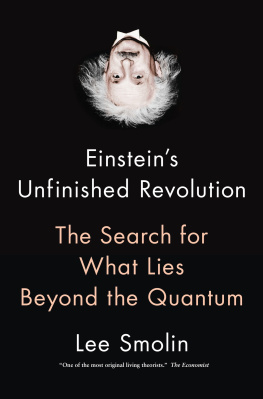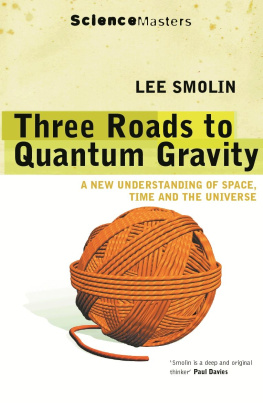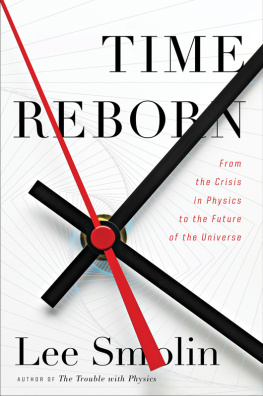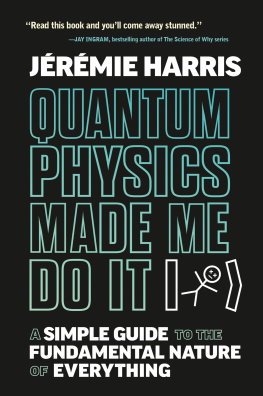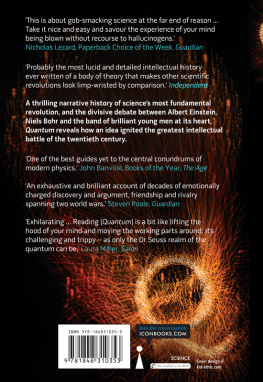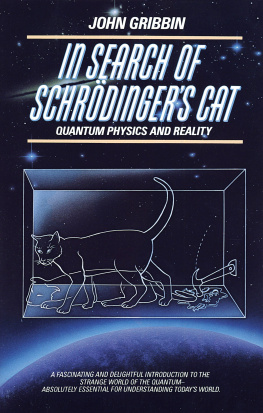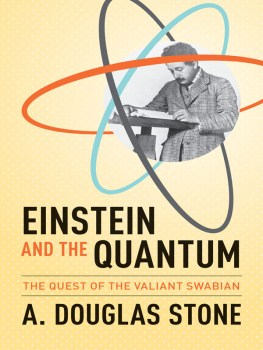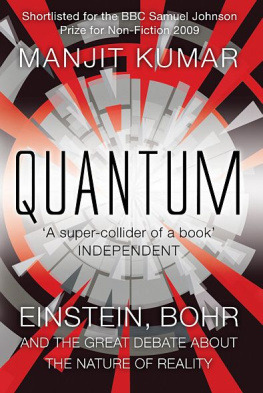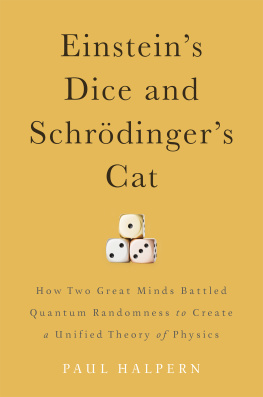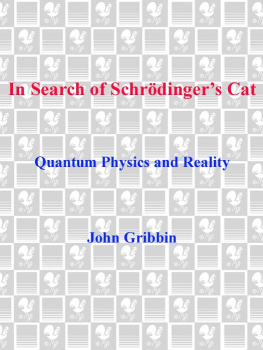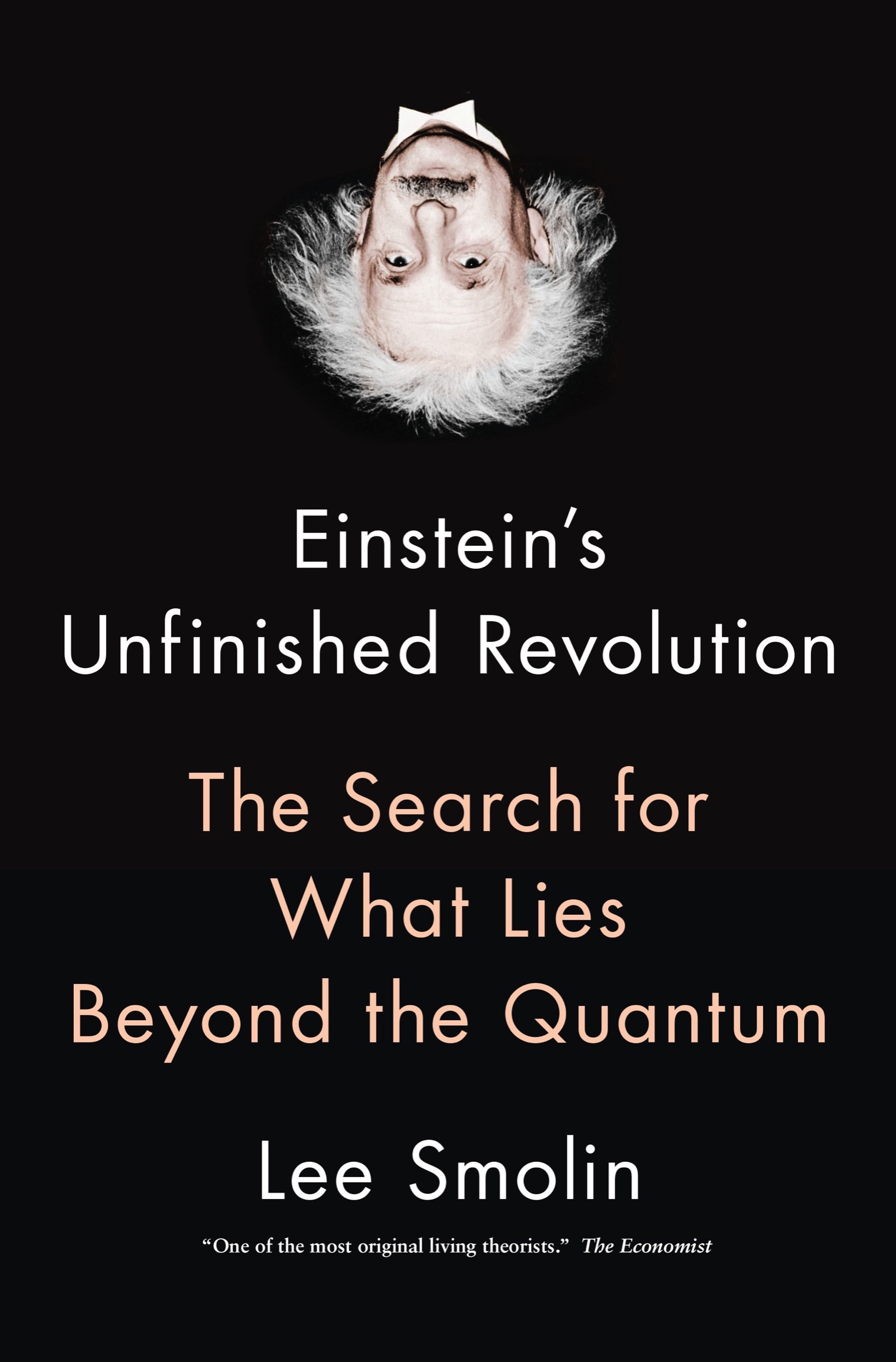Lee Smolin - Einstein’s Unfinished Revolution: The Search for What Lies Beyond the Quantum
Here you can read online Lee Smolin - Einstein’s Unfinished Revolution: The Search for What Lies Beyond the Quantum full text of the book (entire story) in english for free. Download pdf and epub, get meaning, cover and reviews about this ebook. year: 2019, publisher: Penguin Press, genre: Romance novel. Description of the work, (preface) as well as reviews are available. Best literature library LitArk.com created for fans of good reading and offers a wide selection of genres:
Romance novel
Science fiction
Adventure
Detective
Science
History
Home and family
Prose
Art
Politics
Computer
Non-fiction
Religion
Business
Children
Humor
Choose a favorite category and find really read worthwhile books. Enjoy immersion in the world of imagination, feel the emotions of the characters or learn something new for yourself, make an fascinating discovery.
- Book:Einstein’s Unfinished Revolution: The Search for What Lies Beyond the Quantum
- Author:
- Publisher:Penguin Press
- Genre:
- Year:2019
- Rating:3 / 5
- Favourites:Add to favourites
- Your mark:
Einstein’s Unfinished Revolution: The Search for What Lies Beyond the Quantum: summary, description and annotation
We offer to read an annotation, description, summary or preface (depends on what the author of the book "Einstein’s Unfinished Revolution: The Search for What Lies Beyond the Quantum" wrote himself). If you haven't found the necessary information about the book — write in the comments, we will try to find it.
Quantum physics is the golden child of modern science. It is the basis of our understanding of atoms, radiation, and so much else, from elementary particles and basic forces to the behavior of materials. But for a century it has also been the problem child of science: it has been plagued by intense disagreements between its inventors, strange paradoxes, and implications that seem like the stuff of fantasy. Whether its Schrdingers cat--a creature that is simultaneously dead and alive--or a belief that the world does not exist independently of our observations of it, quantum theory challenges our fundamental assumptions about reality.
InEinsteins Unfinished Revolution, theoretical physicist Lee Smolin provocatively argues that the problems which have bedeviled quantum physics since its inception are unsolved and unsolvable, for the simple reason that the theory is incomplete. There is more to quantum physics, waiting to be discovered. Our task--if we are to have simple answers to our simple questions about the universe we live in--must be to go beyond quantum mechanics to a description of the world on an atomic scale that makes sense.
In this vibrant and accessible book, Smolin takes us on a journey through the basics of quantum physics, introducing the stories of the experiments and figures that have transformed our understanding of the universe, before wrestling with the puzzles and conundrums that the quantum world presents. Along the way, he illuminates the existing theories that might solve these problems, guiding us towards a vision of the quantum that embraces common sense realism.
If we are to have any hope of completing the revolution that Einstein began nearly a century ago, we must go beyond quantum mechanics to find a theory that will give us a complete description of nature. InEinsteins Unfinished Revolution, Lee Smolin brings us a step closer to resolving one of the greatest scientific controversies of our age.
Lee Smolin: author's other books
Who wrote Einstein’s Unfinished Revolution: The Search for What Lies Beyond the Quantum? Find out the surname, the name of the author of the book and a list of all author's works by series.

